1. 10 Percent Entrepreneur
Live Your Startup Dream Without Leaving Your Day Job
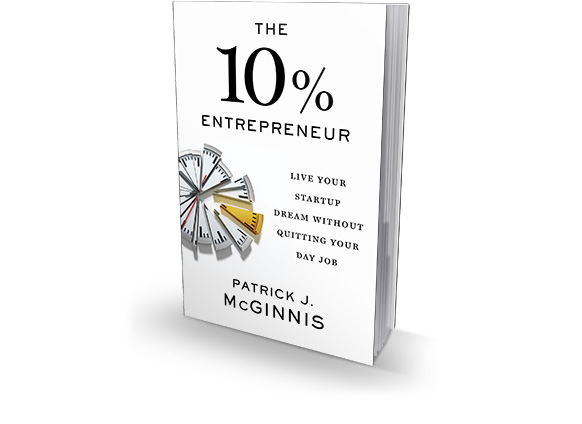 By Patrick J. McGinnis
By Patrick J. McGinnis
April; Portfolio; $28
Everyone knows that building a startup means hard work and long hours, with payment in stock that may turn out to be worthless. Indeed, that’s part of the glamour. But it also keeps some people with good ideas from getting started. Patrick J. McGinnis, a Wall Street venture capitalist, says don’t worry: You can “live your startup dream without leaving your day job.”
Devote 10 percent of your time and capital to pursuing your dream, McGinnis says, and you can keep your job and the security that goes with it. McGinnis, who identifies himself as a 10-percenter, provides a detailed plan to identify a promising first project. He shows how to invest resources in a savvy way, and how to develop something you love doing into a business. Best of all, until you reach your dream of an independent business, McGinnis promises you will perform better at your day job with a step-by-step plan.
Related: 25 Books for Success
2. Abundance Now
Amplify Your Life & Achieve Prosperity Today
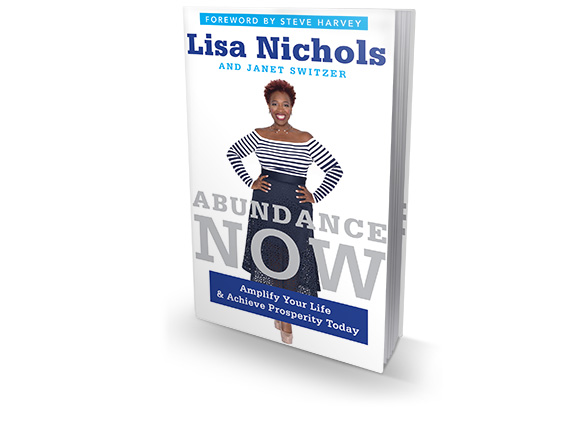 By Lisa Nichols and Janet Switzer
By Lisa Nichols and Janet Switzer
January; Dey Street Books; $26
Abundance means living your ideal life, one that is personally, professionally and financially fulfilling. “This life of abundance is something you get to define for yourself,” writes motivational speaker Lisa Nichols. In this follow-up to No Matter What!, published in 2009, the New York Times best-selling author again draws on her life experiences—as a college dropout, a young mother on public assistance and working dead-end jobs—to demonstrate that all people can transform themselves and transition from a life of scarcity to a life of abundance.
Nichols reveals the nuts and bolts of her journey from “broke and broken” to a place of “prosperity and possibility,” and invites readers to follow her lesson plans for achieving abundance in their lives. She stresses the importance of determining what you want for your life: relationships, career and family, and of spirituality, forgiveness, healing from past hurts, trusting yourself, and learning from past mistakes. Nichols conveys her advice with conviction and enthusiasm and proves that her title of “personal transformation guru” is well-earned.
3. All the Leader You Can Be
The Science of Achieving Extraordinary Executive Presence
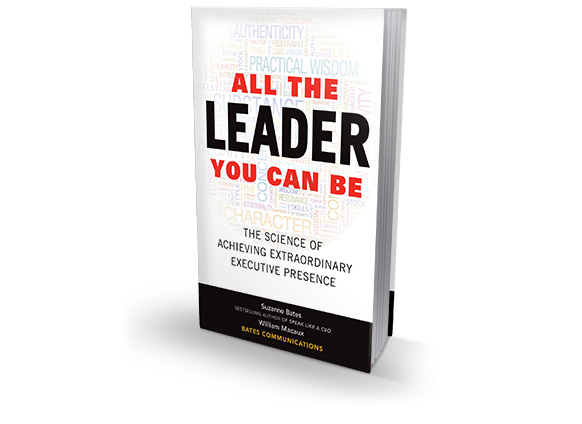 By Suzanne Bates, David Casullo and William Macaux
By Suzanne Bates, David Casullo and William Macaux
March; McGraw-Hill Education; $30
Numbers seem to be important in the leadership game—10 qualities (or is it nine?) that make a great leader, 12 things you can do, or seven steps you can take. Suzanne Bates and William Macaux have a number, too: “15 qualities of executive presence.” But the important number is one, as in: “There’s no single formula for achieving extraordinary executive presence.”
Executive presence is the authors’ term for that indefinable leadership quality that enables talented people to become highly successful. The good news is that Bates, author of the best-selling Speak Like a CEO, and Macaux, a management psychologist, have developed what they call a science-based approach that enables each person to locate his or her individual executive-presence identity. What’s more, they’ve arranged this volume as a guidebook for each stage of a rising executive career. All the Leader You Can Be is not a breezy read—at times it’s as technical as a textbook. It’s a serious book, and serious readers may well benefit.
4. Art Thinking
How to Carve Out Creative Space in a World of Schedules, Budgets, and Bosses
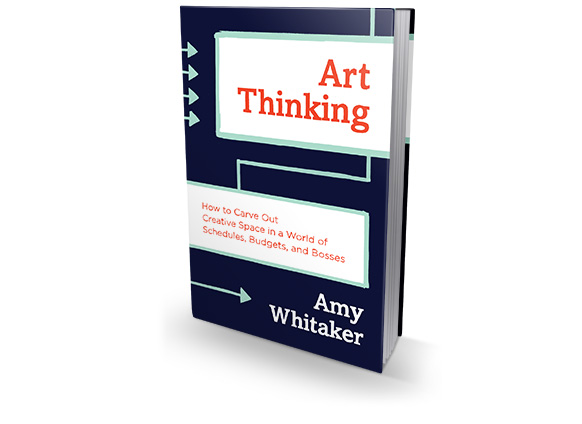 By Amy Whitaker
By Amy Whitaker
July; HarperBusiness; $27
Thinking big is not a new concept; it’s been around since at least 1959, when David J. Schwartz wrote the classic motivational book The Magic of Thinking Big. What Amy Whitaker brings to the discussion is the refreshing notion that business thinkers can learn from artists and writers. At a time when science, technology, engineering and math (the vaunted STEM formula) threaten to crowd the humanities (art, literature, music and scholarship) out of American universities, Whitaker’s approach could not be more timely.
Whitaker holds the title of “entrepreneur in residence” at the New Museum Incubator in New York City. Whitaker takes the human from the humanities and injects it back into the business world. Creativity is messy and uncertain, she argues, and must have room for failure. She provides a program to cultivate art thinking, and how to leverage creative failure into progress, invention, and new products or services.
5. #ASKGARYVEE
One Entrepreneur’s Take on Leadership, Social Media, & Self-Awareness
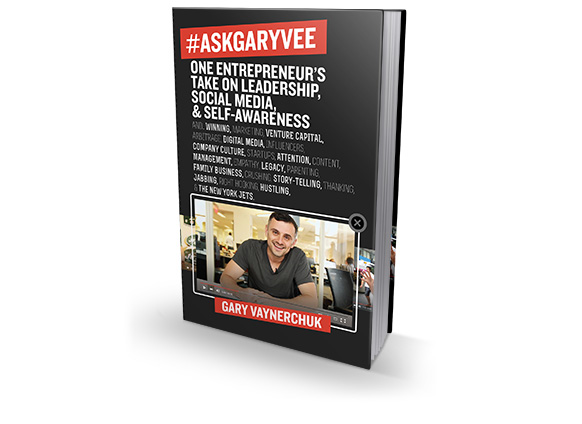 By Gary Vaynerchuk
By Gary Vaynerchuk
March; HarperBusiness; $30
After graduating from college in 1998, Gary Vaynerchuk took over his father’s New Jersey liquor store. In five years, he took it from a $3 million business to a $60 million one. Vaynerchuk accomplished the feat largely by canny use of e-commerce and social media, including the first YouTube wine webcast, Wine Library TV. Started in 2006, the show ran until 2011, with up to 90,000 viewers for its daily webcasts.
Vaynerchuk parlayed that success into a social media consulting agency called Vaynermedia, a 10-book $1 million deal with Harper Studio, and the new YouTube show The #AskGaryVee Show, in which Vaynerchuk answers viewer questions about entrepreneurship, social media and branding.
“I’m a talker,” writes Vaynerchuk, explaining why he prefers video for getting out his message. The book reads like transcripts from the show, and that’s OK when the information being dispensed is this persuasive and accessible. Vaynerchuk answers questions large and small, from whether a business in a non-English-speaking country should use English in social media to how Instagram will evolve. Vaynerchuk’s enthusiasm is infectious.
6. Business for Punks
Break All the Rules—The BrewDog Way
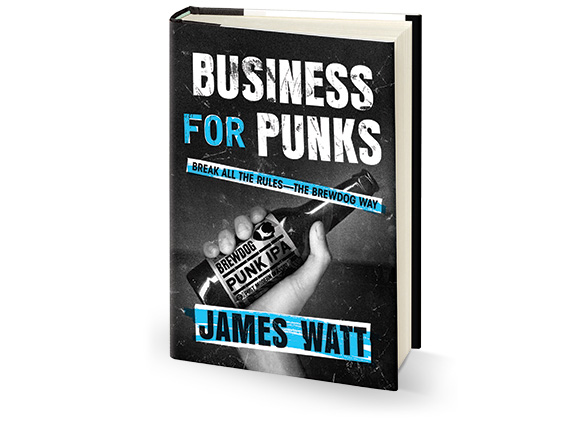 By James Watt
By James Watt
February; Portfolio; $26
BrewDog hasn’t made much of a splash on this side of the pond—yet—but since 2007, the Scottish craft beer company has become one of the fastest-growing drinks brands in the world. In Business for Punks, co-founder James Watt tells how BrewDog did it with punk attitude and rule-breaking, and how you can follow the example. Watt boasts that he intends this book to be no less than “the business bible for a new generation.”
Watt says the old rules simply don’t work anymore, at least for startups like BrewDog. He is occasionally crude, as in his four mantras of punk business: Don’t waste your time on B.S. business plans; forget sales; ignore advice; and put everything on the line for what you believe in.
But he’s also shrewd. He shows how BrewDog reinvented crowdfunding, made use of guerrilla marketing that bordered on vandalism, and created sales strategies specific to the craft beer business. Young entrepreneurs—and anyone who wants to reach millennial customers—might benefit from this outrageous but engaging book.
7. Connect
How Companies Succeed By Engaging Radically with Society
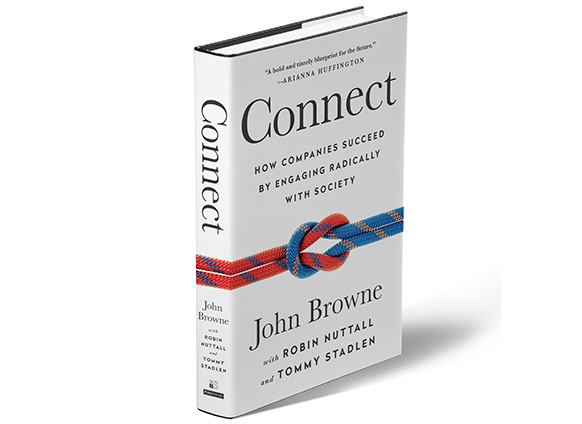 By John Browne with Robin Nuttall and Tommy Stadlen
By John Browne with Robin Nuttall and Tommy Stadlen
March; PublicAffairs; $28
If capitalism has a bad name, the authors of this strongly argued manifesto suggest it is in large part the result of placing profits above basic human values. Including “social and environmental considerations into core business decision-making” is not merely the right thing to do, it is the way 21st century companies will achieve competitive advantage.
8. Ego is the Enemy
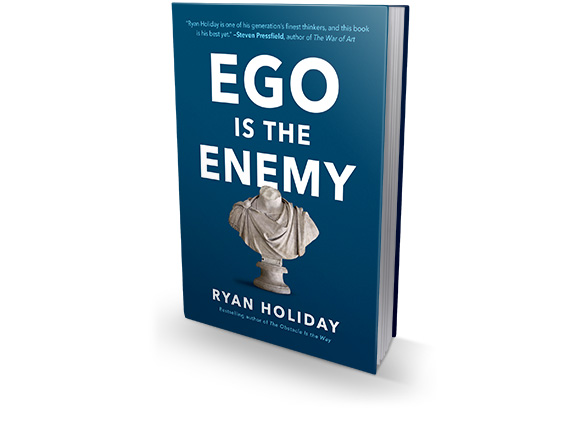 By Ryan Holiday
By Ryan Holiday
June: Portfolio; $25
Only 28, Ryan Holiday has gone from triumph to victory since the age of 19, as a media strategist advising rock bands and authors and as a best-selling author himself. But, Holiday warns, early success is one of the worst things that can happen to a person. “With success comes the temptation to tell oneself a story,” he writes, ignoring the lucky breaks and creating self-mythology. Holiday draws on varied sources—history, literature, philosophy—to suggest strategies to keep the ego in its proper place and proportion.
9. Find Your Extraordinary
Dream Bigger, Live Happier, and Achieve Success on Your Own Terms
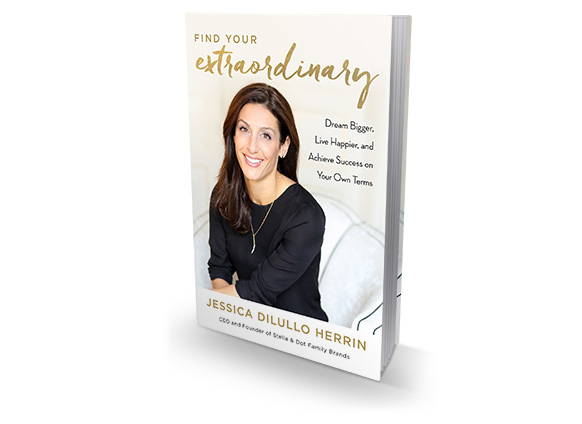 By Jessica DiLullo Herrin
By Jessica DiLullo Herrin
May; Crown Business; $27
She has built not one but two multimillion-dollar businesses from the ground up. Jessica DiLullo Herrin hit it rich first in 1996 (while still a student at Stanford Graduate Business School) with WeddingChannel.com, one of the first full-service bridal websites. After following her husband to Texas and having two children, she started Stella & Dot Family Brands, a craft jewelry business approaching $1 billion in annual sales.
In Find Your Extraordinary, Herrin shares the wisdom gained from the stress and constant work of the first business, which did $100 million a year by the time she left, and the easier pace she’s found with the second. Entrepreneurial principles, she says, can create not only the kind of career you want but also the kind of life you want to live.
10. Good for the Money
My Fight to Pay Back America
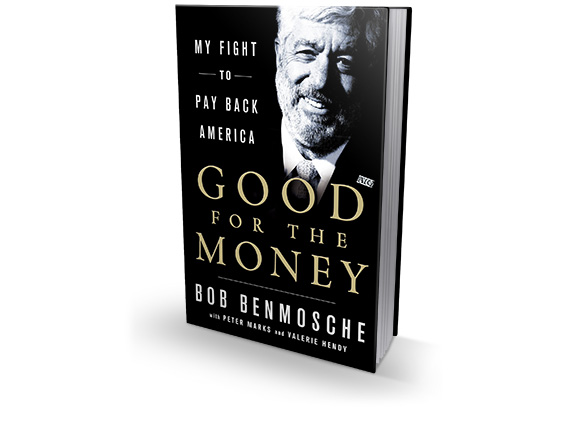 By Robert Benmosche with Peter Marks and Valerie Hendy
By Robert Benmosche with Peter Marks and Valerie Hendy
April; St. Martin’s Press; $28
In 2009 the late Robert Benmosche took over as CEO at AIG, the insurance giant. His timing was remarkably poor; at the time AIG was the object of America’s rage over the mortgage crisis that spiraled the economy into a steep recession, robbed millions of their home equity value, and threw millions more out of work. Yet Benmosche not only pulled AIG from the brink of default, he paid back the enormous sums the company owed the government in only three years. A self-made man, Benmosche tells how he did it.
11. Graduate to a Great Career
How Smart Students, New Graduates and Young Professionals Can Launch Brand YOU
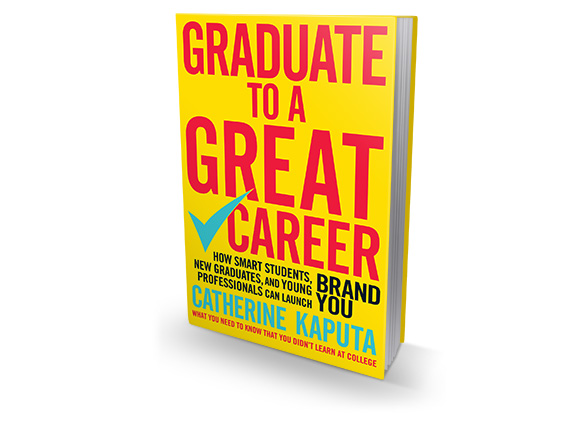 By Catherine Kaputa
By Catherine Kaputa
April; Nicholas Brealey; $17
Branding consultant Catherine Kaputa offers more than the usual personal branding advice. She provides a wealth of useful specifics such as how to format a résumé for today’s job market, how to conduct yourself in a Skype interview and how to make a résumé stand out from competitors. The best news is for liberal arts majors. It’s not necessary to be a coding techie, Kaputa writes, because tech companies are awakening to the value of the human touch. “Creativity can’t be programmed,” she writes.
12. High Hanging Fruit
Build Something Great by Going Where No One Else Will
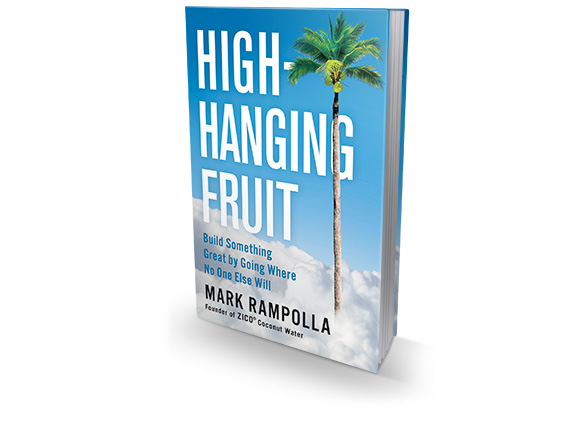 By Mark Rampolla
By Mark Rampolla
July; Portfolio; $28
The general meaning of the phrase high-hanging fruit is obvious. In this regard, Mark Rampolla’s high-hanging fruit was breaking into the U.S. market with a previously neglected product: coconut water. Eventually Rampolla sold his startup, ZICO, to Coca-Cola for more than $200 million. But his real high-hanging fruit is making money while doing good. Customers are smart, he warns, and legacy companies that try to trick them with a pose of social responsibility will not succeed.
13. Illuminate
Ignite Change Through Speeches, Stories, Ceremonies, and Symbols
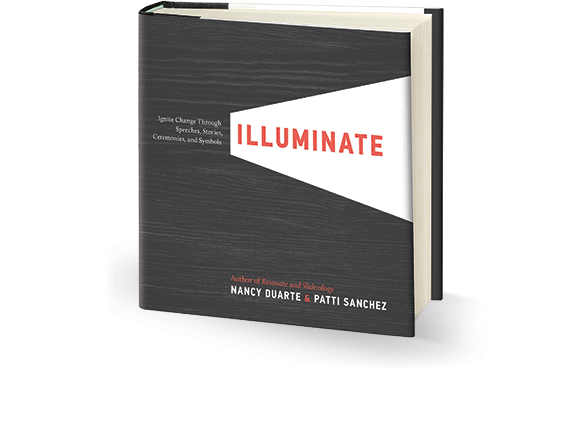 By Nancy Duarte and Patti Sanchez
By Nancy Duarte and Patti Sanchez
February; Portfolio; $32
Humans communicate primarily through story. We tell our spouses stories about our day. An article in this magazine is called a story. Our understanding of the past comes to us in stories, too, from mythology and religion down to the tale Grandpa has told a thousand times about walking 7 miles to school through snow. In the hands of a visionary seer, or someone the authors call a “Torchbearer” like Steve Jobs, stories can also help us see and understand the future, Nancy Duarte and Patti Sanchez write.
That’s a valuable insight in an era of rapid change. “Each time I see the business starting to settle into a state of comfort, I begin to envision our next transformation,” writes Duarte, co-founder and CEO of Duarte, the largest design firm in Silicon Valley. Illuminate brims with catchphrases and terms—the Five-Stage Venture Scape, the Torchbearer’s Toolkit (deliver speeches, tell stories, hold ceremonies)—but, drawn from Duarte’s experience with the changes her own company has undergone, these never seem corny or cliché. Delivered in the form of one vivid story after another, they resonate in the mind.
14. Mad Genius
A Manifesto for Entrepreneurs
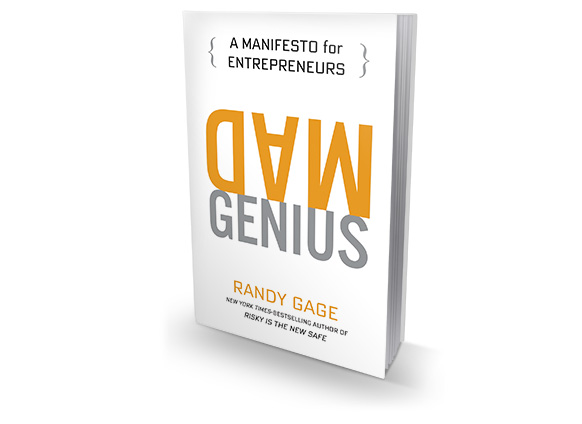 By Randy Gage
By Randy Gage
January; Perigee Books; $24
The recurring theme of this manifesto is that no is never the answer, failure isn’t final unless you quit, and challenges offer the greatest opportunity for innovation and creation. Entrepreneur and angel investor Randy Gage holds forth on everything from branding to memes, virtual reality and more. Mad Genius is irreverent, bold, occasionally wacky, and ultimately satisfying and surprising.
15. Makers and Takers
The Rise of Finance and the Fall of American Business
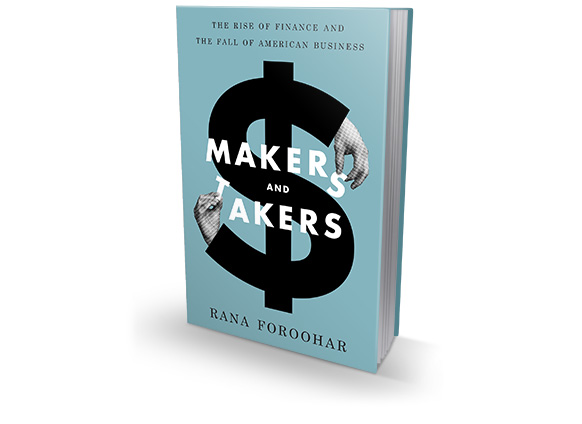 By Rana Foroohar
By Rana Foroohar
May; Crown Business; $30
Time’s economics columnist Rana Foroohar starts naming names on the very first page of this Wall Street exposé, calling out Apple CEO Tim Cook for focusing on “financial engineering rather than the real kind.” Foroohar warns that the financial practices that caused the 2008 stock market meltdown are not only still in practice, they are more widespread and entrenched than ever. “The tail is wagging the dog,” Foroohar writes. This “financialization of America” worsens inequality and guarantees another painful bubble is sure to burst.
16. Make Your Own Waves
The Surfer’s Rules for Innovators and Entrepreneurs
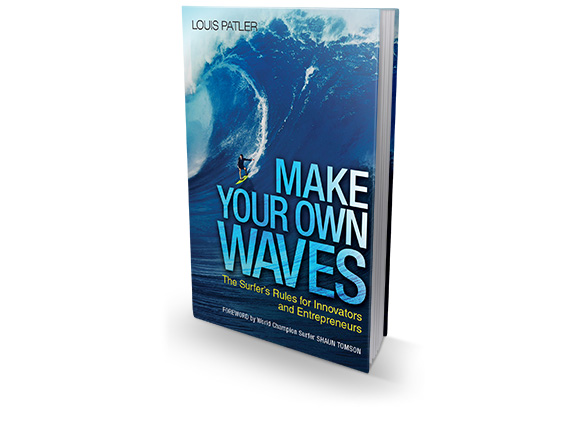 By Louis Patler
By Louis Patler
July; AMACOM; $22
Surfers have produced a number of innovative products and successful businesses, including the GoPro camera. Louis Patler, who is both a consultant and surfer, offers a 10-point plan on how to develop the characteristics successful surfers and entrepreneurs share, beginning with learning to swim. The others: get wet; decide to ride; always look outside; commit, charge, shred; paddle back out; never turn your back on the ocean; dare big; never surf alone; stay stoked. These metaphors prove to be surprisingly powerful teaching tools that stick in the mind.
17. Negotiating the Nonnegotiable
How to Resolve Your Most Emotionally Charged Conflicts
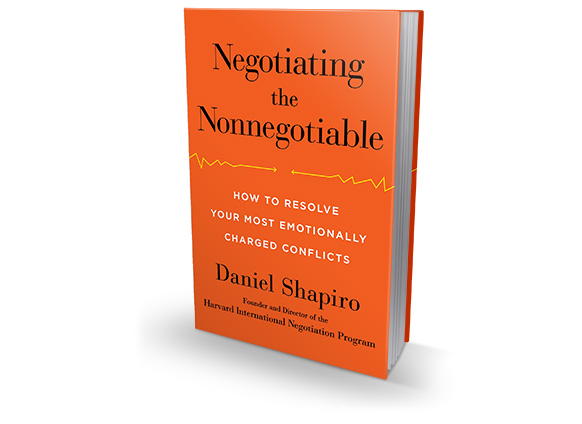 By Daniel Shapiro
By Daniel Shapiro
April; Viking; $28
Daniel Shapiro, a Harvard expert on conflict resolution, promises a “step-by-step method to resolve life’s most challenging conflicts.” But he delivers much more. For example, in the second chapter, “The Dual Nature of Identity,” Shapiro delves into the paradox of human personality—it feels both fixed and also changeable. “This paradox cuts right to the heart of conflict resolution,” Shapiro writes, using a scene from Alice’s Adventures in Wonderland to illustrate his point.
Alice realizes identity is both fluid and fixed, a fact that allows conflicts to be resolved. Based on Shapiro’s 20 years of research around the world, Negotiating the Nonnegotiable shows how threats to our sense of identity, what he calls “the Tribes Effect,” can make compromise seem impossible—in family conflict, a workplace dispute or even an international crisis. Shapiro has written a book of psychological, social and political significance.
18. Never Split the Difference
Negotiating As If Your Life Depended On It
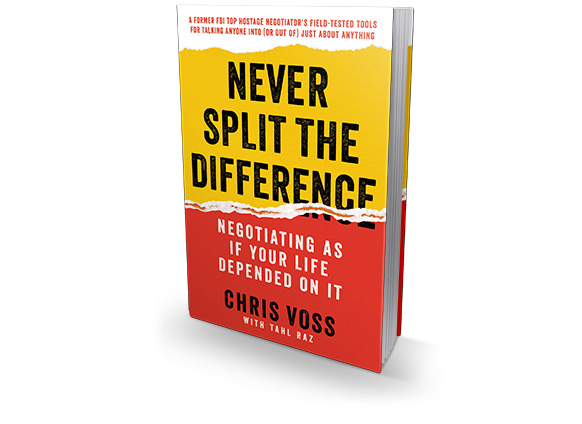 By Chris Voss with Tahl Raz
By Chris Voss with Tahl Raz
May; HarperBusiness; $29
The biggest error of conventional negotiating theory, says Chris Voss, formerly the FBI’s top international kidnap negotiator, is the assumption people are logical and behave in their own best interests. In fact, no one behaves rationally, leaving emotion to dominate pressure situations. That’s as true in business, Voss writes, as it is in the FBI. After all, life is one negotiation after another—from buying a car to starting a business to asking for a raise.
Voss provides lists and tips throughout the book, breaking effective negotiating into nine general principles: Be a mirror; don’t feel their pain; beware of yes, master no; trigger the two words that immediately transform any negotiation; bend reality; create the illusion of control; guarantee execution; bargain hard; and find black swans. Voss illustrates points with anecdotes from his FBI career, lending the book some suspense—rare for a business treatise.
19. Now Go Out There
(and Get Curious)
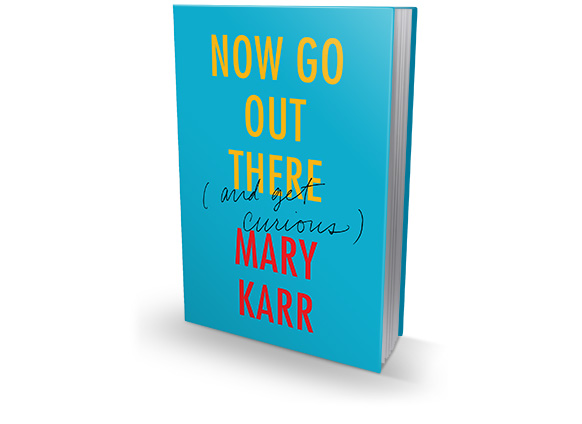 By Mary Karr
By Mary Karr
April; Harper; $15
Mary Karr helped invent the modern memoir with her popular 1995 account of a wretched childhood, The Liars’ Club. Now she contributes to another dawning genre: the commencement speech published as a book. Delivered at Syracuse University in 1995, this speech is gritty: “Being smart and rich are lucky, but being curious and compassionate will save your ass.” If she relies a bit on 12-step wisdom, well, it really is wise. At 80 pages, a fine gift book.
20. O Great One!
A Little Story About the Awesome Power of Recognition
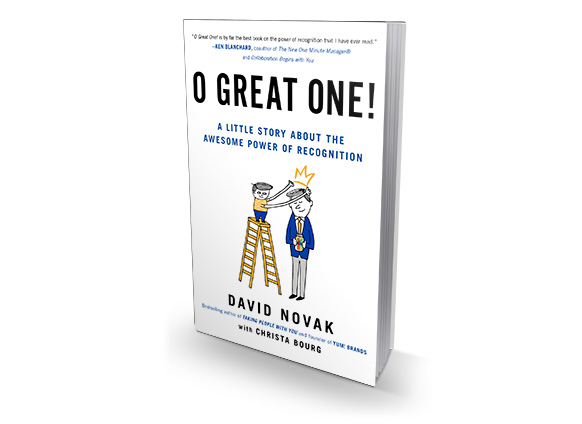 By David Novak with Christa Bourg
By David Novak with Christa Bourg
May; Portfolio; $25
During the 14 years David Novak served as CEO at Yum! Brands (KFC, Pizza Hut, Taco Bell), he used recognition to develop the company into one of the world’s biggest restaurant outfits. “If you give people the recognition they’ve earned, if you show genuine appreciation and acknowledge the unique things people have to offer, then you will drive real results.”
Novak is puzzled why recognition is used so little in the business world. To get the word out, he writes a parable about Jeff Johnson, the new CEO, trying to save his family toy company. There’s more story here than in earlier business parables such as Who Moved My Cheese? After reading it, bosses might be more apt to pat employees on the back and give an “attaboy” for work well done.
21. Operation Happiness
The 3-Step Plan to Creating a Life of Lasting Joy, Abundant Energy, and Radical Bliss
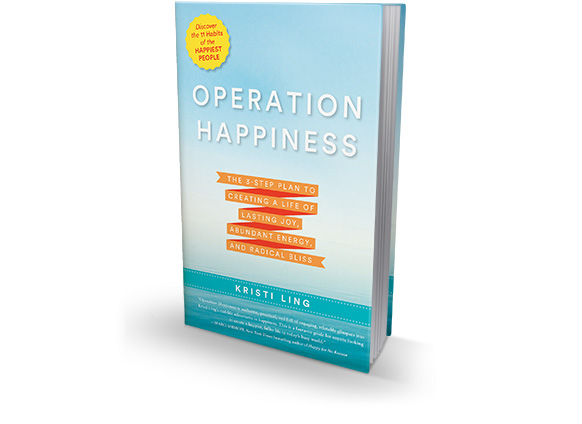 By Kristi Ling
By Kristi Ling
March; Rodale; $25
Kristi Ling wants to smash the idea that happiness is a lucky accident that befalls some people but not others. Instead, she says, “Happiness is a skill that can be learned, improved upon, and even mastered—just like playing the violin or riding a bike.” If you’re willing to follow her program, which is grounded in neuroscience, cognitive-behavioral psychology and ancient spiritual disciplines, you can learn to be happy, too.
Part I focuses on how to change defeatist attitudes. Part II devotes five chapters to restructuring mornings to support daily happiness. Part III unveils Ling’s 11 Habits of Happy People. All three sections provide actionable steps, worksheets and tools. As Ling writes, “I can’t promise it will be easy, but if you stick with it for as long as it takes to feel the shift in your core, you will reach a new level of consistent, sustainable happiness.”
22. Peak
Secrets from the New Science of Expertise
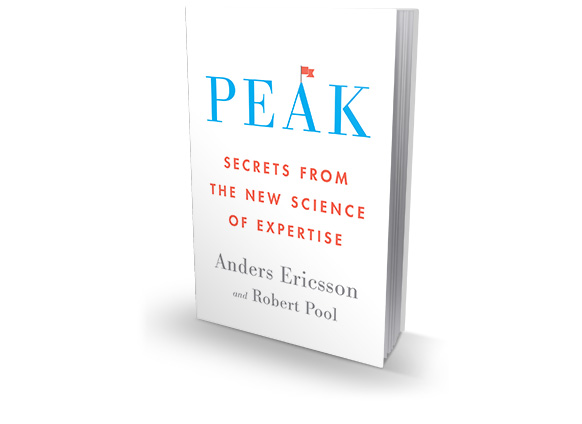 By Anders Ericsson and Robert Pool
By Anders Ericsson and Robert Pool
April; Houghton Mifflin Harcourt; $28
Anders Ericsson, a Florida State University research psychologist, has studied gifted people in chess, sports, music and medicine for more than 30 years. Malcolm Gladwell based his 2008 bestseller, Outliers, on Ericsson’s work. But Ericsson rejects Gladwell’s interpretation as an oversimplification: It’s not just how many hours you put in; it’s how you use them.
23. Platform Revolution
How Networked Markets Are Transforming the Economy and How to Make Them Work for You
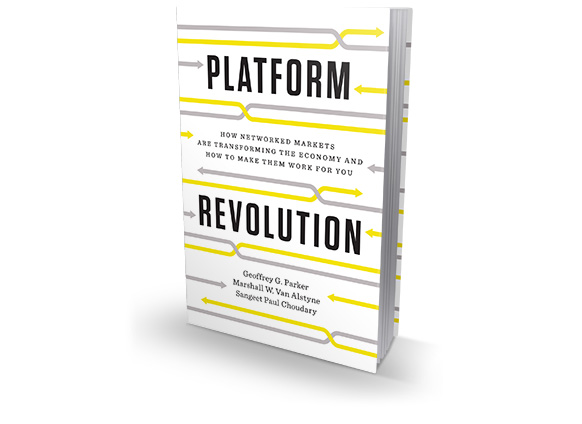 By Geoffrey G. Parker, Marshall W. Van Alstyne and Sangeet Paul Choudary
By Geoffrey G. Parker, Marshall W. Van Alstyne and Sangeet Paul Choudary
March; W.W. Norton; $27
The authors of this book, two academics and an analyst, argue that digital platforms will disrupt legacy businesses for the foreseeable future. They acknowledge that this is not altogether good—thousands will face unemployment, as when Craigslist demolished newspaper classified advertising. But it will also generate billions in value and provide unforeseen opportunities for those who know how it works.
24. Play Bigger
How Pirates, Dreamers, and Innovators Create and Dominate Markets
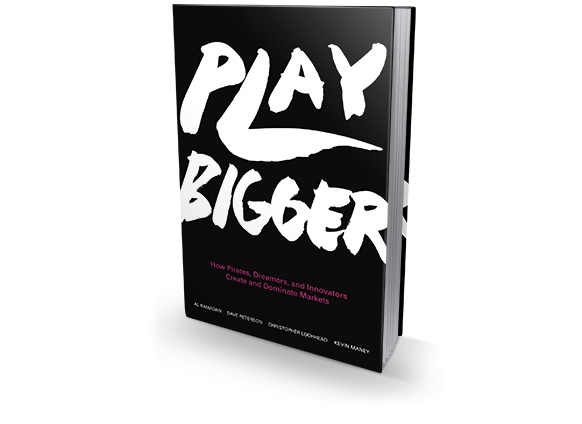 By Al Ramadan, Dave Peterson, Christopher Lochhead and Kevin Maney
By Al Ramadan, Dave Peterson, Christopher Lochhead and Kevin Maney
June; HarperBusiness; $29
Winning big today means playing big, according to the authors of this enthusiastic but serious book. And that means creating a new game with new rules and then dominating it. Play Bigger is the work of a three-man Silicon Valley advisory team that, according to co-writer Kevin Maney, “gets paid large sums of money to help companies do exactly what’s in this book. (So you’re getting it cheap!)”
The authors conducted interviews and analyzed data to peer into the inner workings of revolutionary companies such as Amazon, Uber and IKEA in pursuit of transformative ways of doing business. They emerge with what they call “category design,” a discipline they say enables a company to generate demand where none existed, influence the thinking and buying habits of customers, and create a brand-new market. Category design may derive primarily from examples in the tech industry, but the authors promise that it applies to any business.
25. Presence
Bringing Your Boldest Self to Your Biggest Challenges
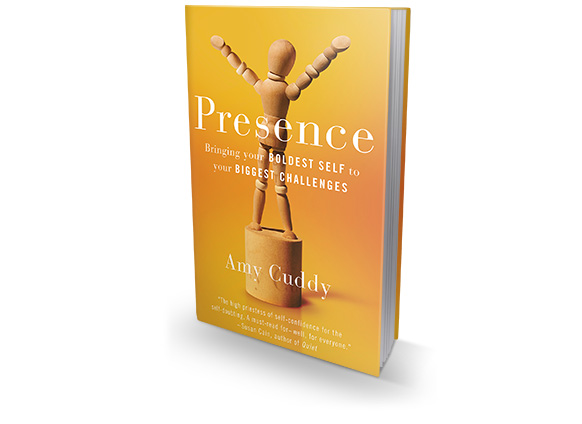 By Amy Cuddy
By Amy Cuddy
December 2015; Little, Brown and Co.; $28
More than 28 million people have watched Harvard Business School associate professor Amy Cuddy’s TED Talk, “How Your Body Language Shapes Who You Are.” In her new book, Cuddy dives deeper into the topic, exploring how our state of mind, behaviors and body language reflect power and presence (or the lack thereof).
According to Cuddy, presence stems from “believing and trusting… your feelings, beliefs, values and abilities.” She points out that if you don’t trust in yourself or believe in what you’re saying, it’s difficult to project the confidence inherent to presence. Leaving the scientific jargon for the classroom, Cuddy masterfully illuminates the complex relationship between what we think and how we present ourselves. She counsels readers on how to reduce anxiety and pump up presence through “tiny tweaks” (paying attention to posture, eye contact, language and tone, for example). More than a valuable and fresh look at how we present ourselves to others, Presence is a well-written, absorbing read.
26. Reinvention
Accelerating Results in the Age of Disruption
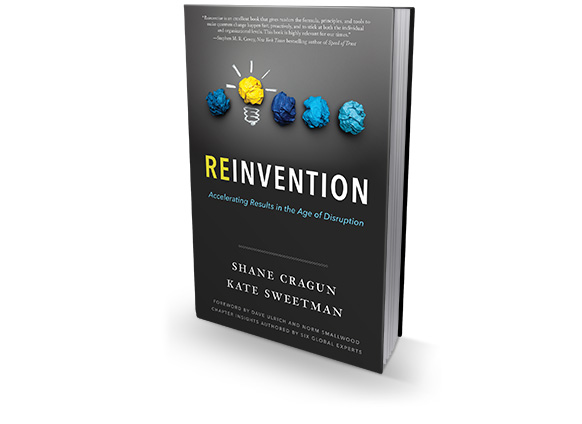 By Shane Cragun and Kate Sweetman
By Shane Cragun and Kate Sweetman
July; Greenleaf Book Group Press; $22
“It’s quite easy to find examples of individuals and organizations that launched radical change because they had to,” write the authors of Reinvention. “It’s a bit more challenging to find examples like Sheikh Rashid of Dubai.”
Rashid, who started planning for the end of Dubai’s oil economy in 1966, merits an entire chapter in Reinvention. He’s only one of the economic superstars highlighted, but his story well-illustrates the central point: Prepare to reinvent yourself before crisis arrives.
Authors Shane Cragun and Kate Sweetman, co-founders of a global management and consulting firm, provide an overview of current thinking on disruption and change. Applied strategically, their principles will greatly benefit managers, entrepreneurs and even ordinary individuals.
27. Scaling Lean
Mastering the Key Metrics for Startup Growth
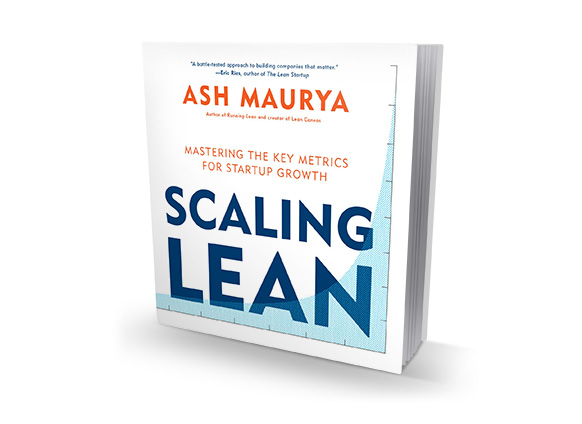 By Ash Maurya
By Ash Maurya
June; Portfolio; $30
Just as almost no one waits for yesterday’s news to arrive on the doorstep, startups in the digital age cannot afford to rely on yesterday’s metrics. Ash Maurya, creator of the one-page business modeling tool “Lean Canvas” and author of the startup guide Running Lean, subjects every angle of business measurement to rigorous inquiry. The result is a box of fresh and efficient tools for entrepreneurs to measure the feasibility of their business models.
28. Small Data
The Tiny Clues That Uncover Huge Trends
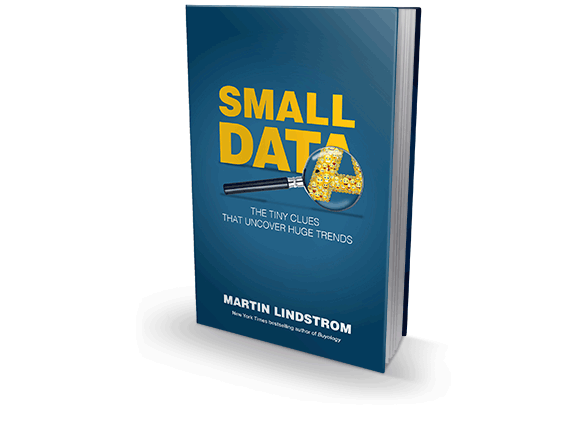 By Martin Lindstrom
By Martin Lindstrom
February; St. Martin’s; $26
Martin Lindstrom is not only the author of perceptive (and cleverly titled) books such as Buyology and Brandwashed, he’s also a branding consultant for many of the biggest and most famous brands in the world. His new book, Small Data, is filled with evidence from Lindstrom’s branding work proving that Big Data—masses of online consumer information—is not enough. The up-close, personal research Lindstrom calls small data is needed, too.
Small Data opens with the turnaround of Lego, a company so successful today that it’s a shock to discover it was in danger of crashing in the early 2000s. Big Data analysis always reached a dismal conclusion: “Future generations would completely lose interest in Lego.” But Lindstrom, in one of his small data studies, noticed a boy’s scuffed sneaker, the result of the boy’s passion for skateboarding. This led Lindstrom to conclude that kids would not abandon traditional toys and inspired Lego to reject Big Data analysis, focusing on its core products instead. By 2014, Lego passed Mattel as the world’s top toy maker.
29. Smart Mom Rich Mom
How to Build Wealth While Raising a Family
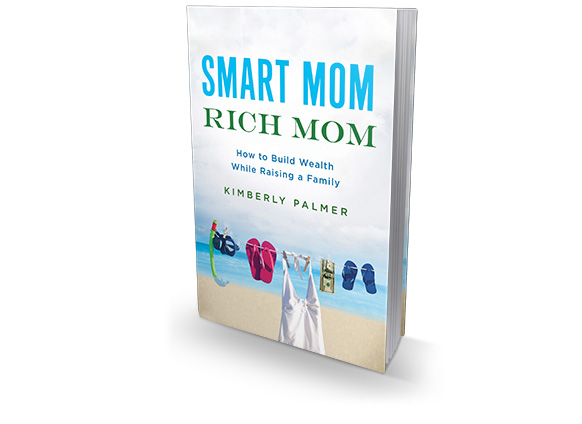 By Kimberly Palmer
By Kimberly Palmer
June; AMACOM; $15
It seems an impossible task, building wealth with small children in the house. The temptation to borrow (or steal) from your older self can be overwhelming. Kimberly Palmer reminds us that it costs $250,000 to raise one child, and that’s not counting college. Women, says Palmer, citing Fidelity, make 85 percent of consumer purchases, influence 90 percent of goods and services, and, by 2020 will be controlling two-thirds of American wealth. Aimed not only at moms but also other women, Palmer offers no great secrets, just sound advice—keep track of spending, set goals, plan for the unexpected—and she does it with infectious energy and useful detail.
30. Superbosses
How Exceptional Leaders Nurture Talent to Achieve Market Domination
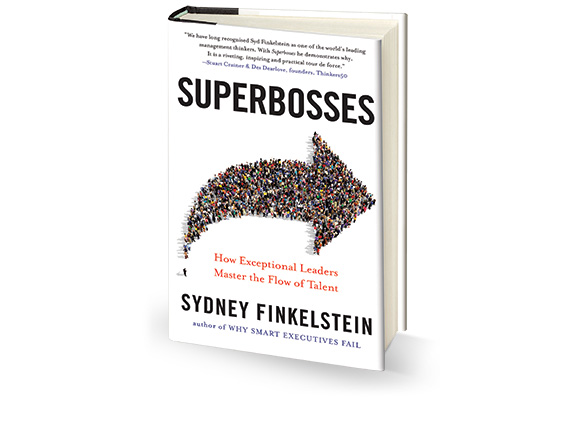 By Sydney Finkelstein
By Sydney Finkelstein
February; Portfolio; $28
Sydney Finkelstein possesses a big brain, gaudy credentials (consultant, speaker, professor of management at Dartmouth College’s Tuck School of Business), and a clear, entertaining writing style. Perhaps the most striking thing about Superbosses is how optimistic—even sunny—Finkelstein’s tone is. An influential restaurateur and chef, Finkelstein spent 10 years investigating business leadership in search of patterns across a range of industries.
And he found them. A superboss is not what Finkelstein calls a “bossy boss,” the Donald Trump-style of outsized personalities who “crack the whip and push employees to their limits.” A superboss, regardless of other qualities, is someone who develops talent. Finkelstein identifies 18 primary superbosses and a few dozen “likely superbosses,” including comedy’s Lorne Michaels and Jon Stewart, musician Miles Davis, NFL coach Bill Walsh, and clothier Ralph Lauren. Each has spawned generations of talented leaders. What’s more, Superbosses is that rare business book that does more than inform. It’s positively hard to put down.
31. The Geography of Genius
A Search for the World’s Most Creative Places, from Ancient Athens to Silicon Valley
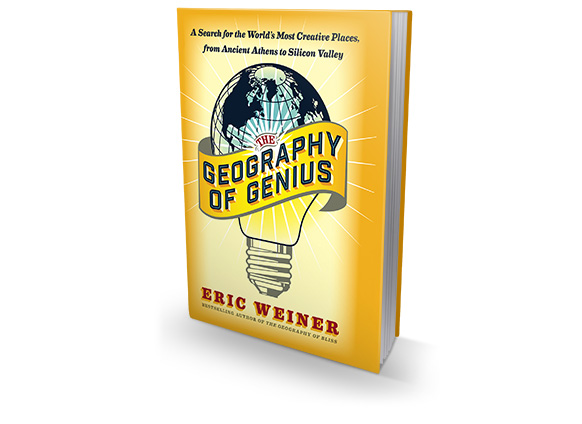 By Eric Weiner
By Eric Weiner
January; Simon & Schuster; $27
Renaissance Italy was a hotbed of creativity and innovation. Viennese coffee shops of the 19th century hosted a generation of intellectuals, such as Sigmund Freud. Ancient Greece birthed philosophers aplenty. Why? “Certain places, at certain times, produced a bumper crop of brilliant minds and good ideas,” writes Eric Weiner, author of the best-selling Geography of Bliss. Weiner takes readers on a delightful armchair road trip to visit these genius “clusters” and learn about the relationship between culture, creativity, geography and history. Weiner’s snappy writing and unique observations round out the enjoyable adventure.
32. The Greats on Leadership
Classic Wisdom for Modern Managers
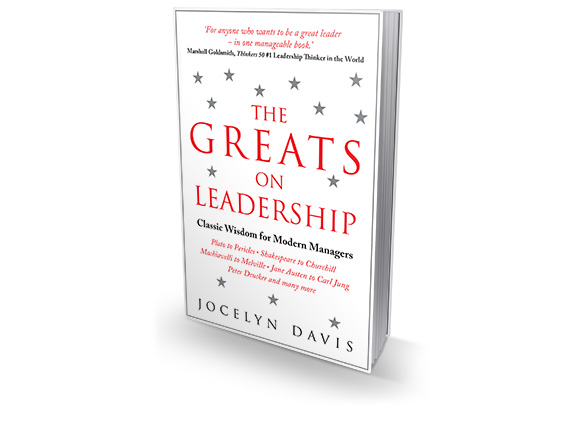 By Jocelyn Davis
By Jocelyn Davis
May; Nicholas Brealey; $30
It’s nice to toss around impressive names—Shakespeare, Plato, Jung, Machiavelli or Lao Tzu—but could these dusty old paragons really be of use to a manager today? For anyone willing to put in the time and effort, the answer is a definite yes. Jocelyn Davis cleverly fuses the thoughts of classic writers and philosophers into the foundation of what is essentially a brainy how-to book.
Davis examines 24 leadership topics, each given its own chapter. She plumbs Shakespeare’s Henry V for insight on crisis management, Melville’s Billy Budd for accountability and Machiavelli’s The Prince on change. Davis provides a book of substance that is a joy to read. In doing so, she demonstrates the relevance of the humanities even in a fast-changing 21st-century world.
33. The Healthy Workplace
How to Improve the Well-Being of Your Employees—and Boost Your Company’s Bottom Line
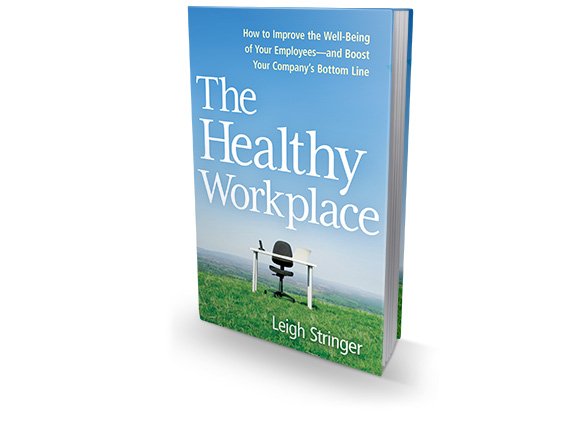 By Leigh Stringer
By Leigh Stringer
July; AMACOM; $28
Everyone would like to promote employee wellness, but does it really boost your bottom line? Leigh Stringer, a workplace expert at EYP Architecture and Engineering, marshals impressive evidence that it does. Studies, she says, show that staring at computer screens, eating unhealthy meals at a work desk, long hours, stress and other consequences of squeezing employees too hard is bad strategy. Not only does it result in time and productivity lost to sick days, but it also reduces workers’ efficiency when they are on the job.
Yet while vast numbers of workers “are already trying hard to be healthy at work,” most companies remain “fairly reactive when it comes to employee health.” Stringer uses herself as a guinea pig, trying new techniques, nutritional ideas and up-to-date behavioral science. It’s a fun trip, but it’s also an effective way to provide lots of research and information. Stringer concludes with a detailed chapter called “The Business Case for Health” that convincingly argues that proactive health strategies result in an impressive return on investment.
34. The Network Imperative
How to Survive and Grow in the Age of Digital Business Models
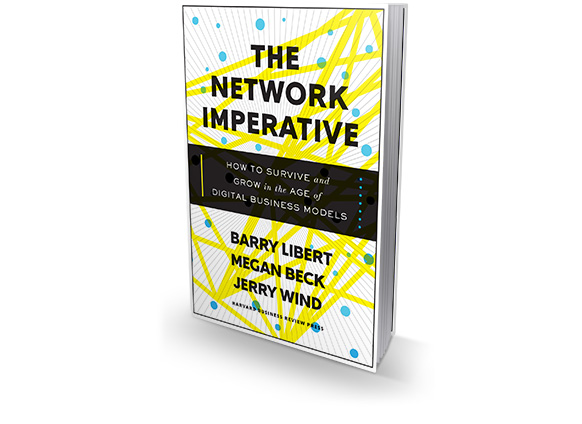 By Barry Libert, Megan Beck and Jerry Wind
By Barry Libert, Megan Beck and Jerry Wind
June; Harvard Business Review Press; $32
First Amazon came for the bookstores. Then Google came for the newspapers. Now Uber has come for the taxi and rental car companies. And your business is next. As early as 2020, “every organization will either be digital predator or digital prey.” The authors of this book want to show how to transform even the most traditional business model into a digitized, networked operation.
35. The Power of Broke
How Empty Pockets, a Tight Budget, and a Hunger for Success Can Become Your Greatest Competitive Advantage
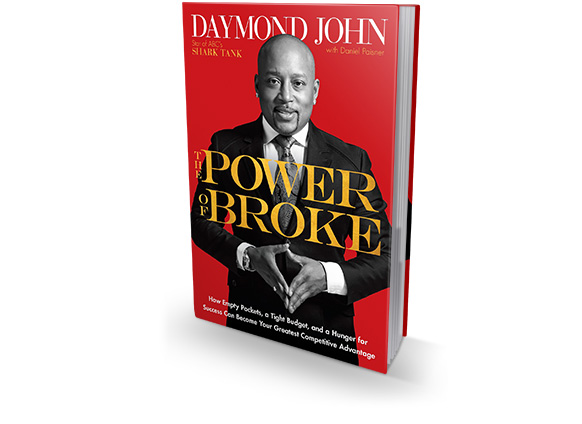 By Daymond John with Daniel Paisner
By Daymond John with Daniel Paisner
January; Crown Business; $26
Being broke forces you to dig deeply—to trust and invest in yourself.Being broke means you have to occasionally “kick yourself in the butt” to keep moving forward, writes Daymond John, founder of fashion empire FUBU and star of ABC’s Shark Tank.
Revisiting his entrepreneurial origins, John recounts his start selling hand-knit hats with $40 in startup money, being turned down by 27 banks when seeking funds to finance his first FUBU orders, and borrowing $100,000 against his mother’s house for equipment and supplies to fill those orders. His story and that of the other entrepreneurs he profiles prove that success requires perseverance, creativity, ingenuity and a hefty dose of hustle.
The Power of Broke is an entertaining mix of practical advice, success stories and behind-the-scenes Shark Tank tales. Still, readers may be left longing for more of John’s invaluable business intelligence.
36. The Power to Get things Done
(Whether You Feel Like It or Not)
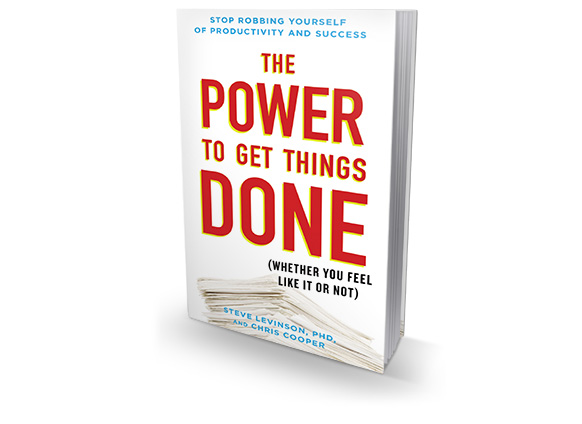 By Steve Levinson and Chris Cooper
By Steve Levinson and Chris Cooper
January; Perigee Books; $17
Psychologist Steve Levinson and executive coach Chris Cooper show readers how to combat the inner resistance that stops people from turning good intentions into actions. The authors explain how sidestepping tasks increases resistance to accomplishing them, and they prescribe an action plan to overcome the “avoidance monster.” For example: Reduce resistance by breaking the task into small activities, tackle tasks in short time bursts, and commit to doing the least stressful tasks to create momentum. If you struggle with avoidance and procrastination, this slim volume is one you shouldn’t avoid.
37. The Sleep Revolution
Transforming Your Life, One Night at a Time
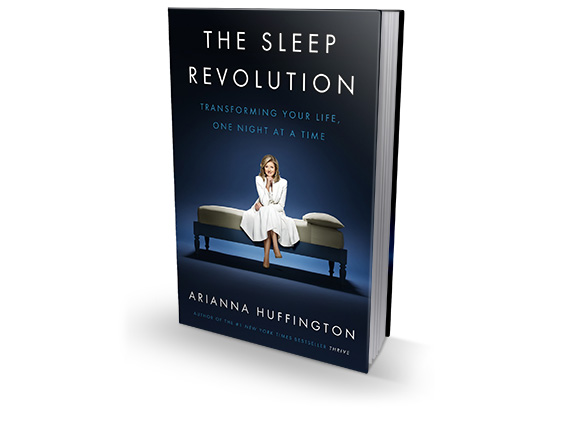 By Arianna Huffington
By Arianna Huffington
April; Harmony; $26
Writer and editor Arianna Huffington has made the most of the digital age, revolutionizing the online news business with The Huffington Post, which AOL bought for $315 million in February 2011. In recent years Huffington has turned her attention to the things that money can’t buy. First came On Becoming Fearless… In Love, Work, and Life in 2007, followed by Thrive: The Third Metric to Redefining Success and Creating a Life of Well-Being, Wisdom, and Wonder, released in 2014.
Having shown the way to courage and spirituality, Huffington now takes us on a tour of what she calls “our current sleep crisis.” Excessively focused on the work-hard, play-hard approach to life, we undervalue sleep and all the things it provides the foundation for: mental clarity, physical health, even sex. Huffington gives a thorough tour of current sleep science, investigates the sleeping-pill industry, and offers tips on how to sleep better.
38. The Three Box Solution
A Strategy for Leading Innovation
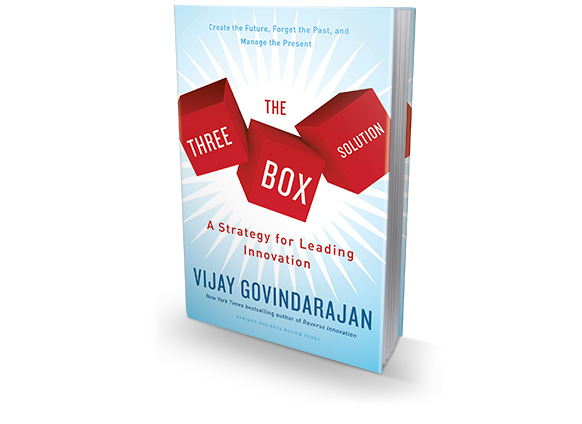 By Vijay Govindarajan
By Vijay Govindarajan
April; Harvard Business Review Press; $32
The central problem facing successful businesses is how to run a mature company while balancing the need for continued innovation. Harvard University Business School fellow and Tuck School of Business professor Vijay Govindarajan offers a simple but not simplistic formula that he calls the three-box solution. Keep the current business humming, forget what got you there, and come up with a new model for the future. His book is both challenging and easy to understand, offering numerous examples—from IBM to GE to Hasbro—of companies that have made it work.
39. Think Simple
How Smart Leaders Defeat Complexity
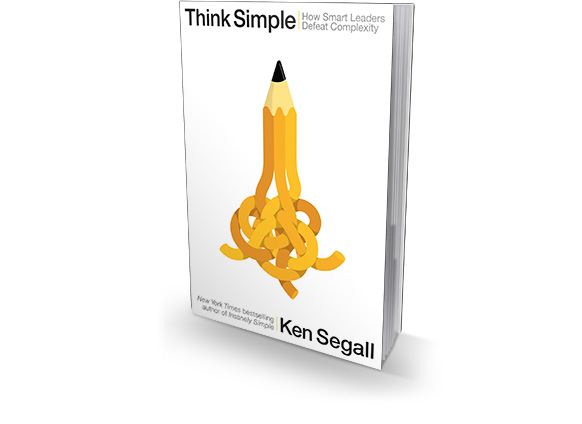 By Ken Segall
By Ken Segall
June; Portfolio; $28
Simplicity isn’t simple, says Ken Segall, but it is “arguably the most potent weapon in business.” An advertising creative director who worked closely with Apple for more than 12 years, Segall named the iMac and wrote the iconic “Think Different” campaign. His appreciation for simplicity comes directly from Steve Jobs. “His obsession with simplicity was not just visible with Apple’s products. You could see it in the way the company organized, innovated, advertised, sold at retail, and provided customer service.”
Segall sets out in search of other “heroes of simplicity,” such as Ben & Jerry’s, Whole Foods, The Container Store and even the Blue Man Group. Jerry Greenfield, for example, discusses how a focus on simplicity allowed Ben & Jerry’s to grow from a local ice cream company to a top worldwide brand without sacrificing the company’s original values.
40. Throwing Rocks at the Google Bus
How Growth Became the Enemy of Prosperity
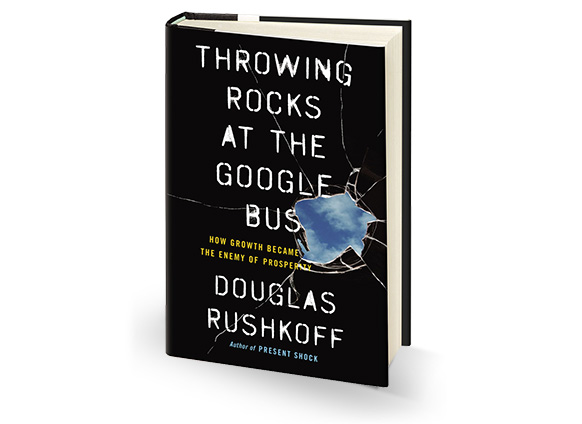 By Douglas Rushkoff
By Douglas Rushkoff
March; Portfolio; $28
When protesters tossed stones at a bus for Google employees in San Francisco in 2013, the digital economy had long since betrayed its promise, says media scholar and writer Douglas Rushkoff.
Instead of providing broad prosperity, the digital economy enriches a few while disrupting industries and robbing millions of their jobs. It doesn’t have to be this way; he says the problem isn’t digital technology, but the winner-take-all system on which it is built. Rushkoff offers a detailed plan to both wean companies from the addiction to short-term growth and lead them to worker-owned co-ops that replace platform monopolies (so long, Uber!).
41. Year of Yes
How to Dance It Out, Stand in the Sun and Be Your Own Person
 By Shonda Rhimes
By Shonda Rhimes
November 2015 ; Simon & Schuster; $25
For most of her life, the creator of Scandal, Grey’s Anatomy and How to Get Away with Murder said no to just about every social invitation that came her way. The same woman who can write snappy, smart dialogue for days was so introverted that she completely avoided situations in which she’d have to speak extemporaneously, be interviewed or face an unknown situation.
She was content to stay home with her three kids until Thanksgiving of 2013, when her sister remarked that Rhimes always said no and that it was time to say yes. It was a daunting challenge, but she accepted it and cemented her commitment by writing a book about her experience. Her account of the year that followed her Thanksgiving transformation from fearful to fearless is full of surprises and juicy anecdotes. It’s also candid, clever, inspiring and funny.







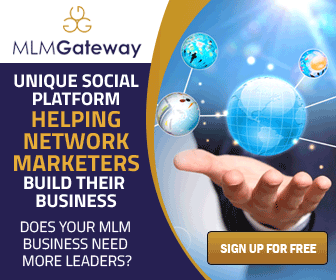



















0 Comments
Thank You For Visit And Commenting In This Blog.
Stay Home Stay Safe.
Wish You Wellth.
+918282822858